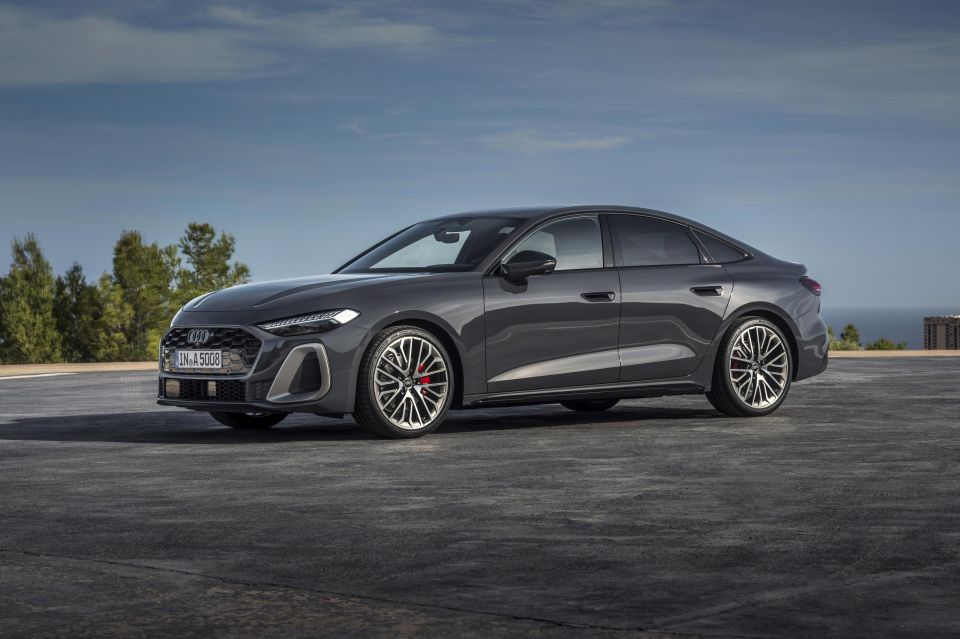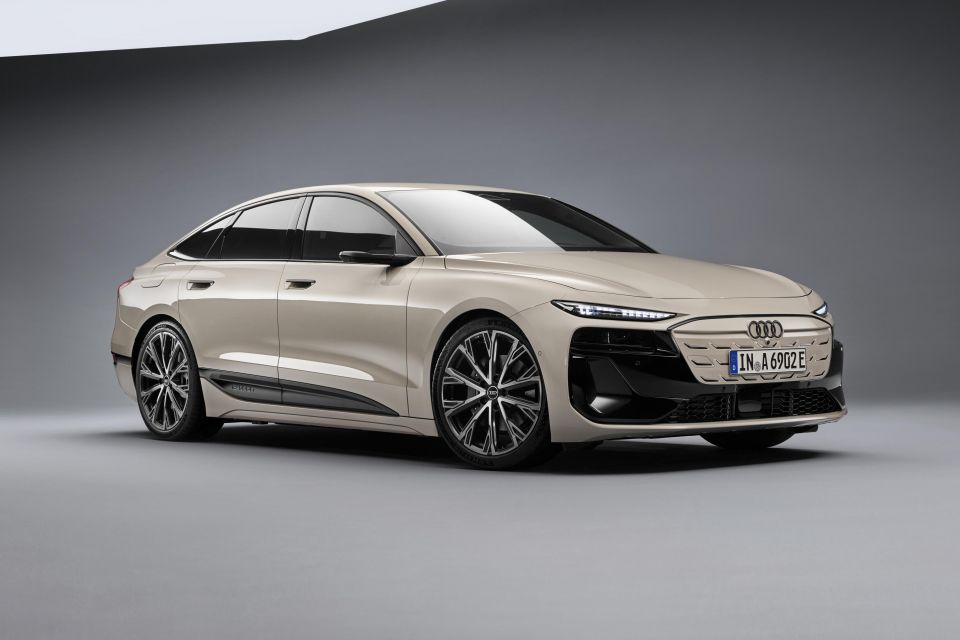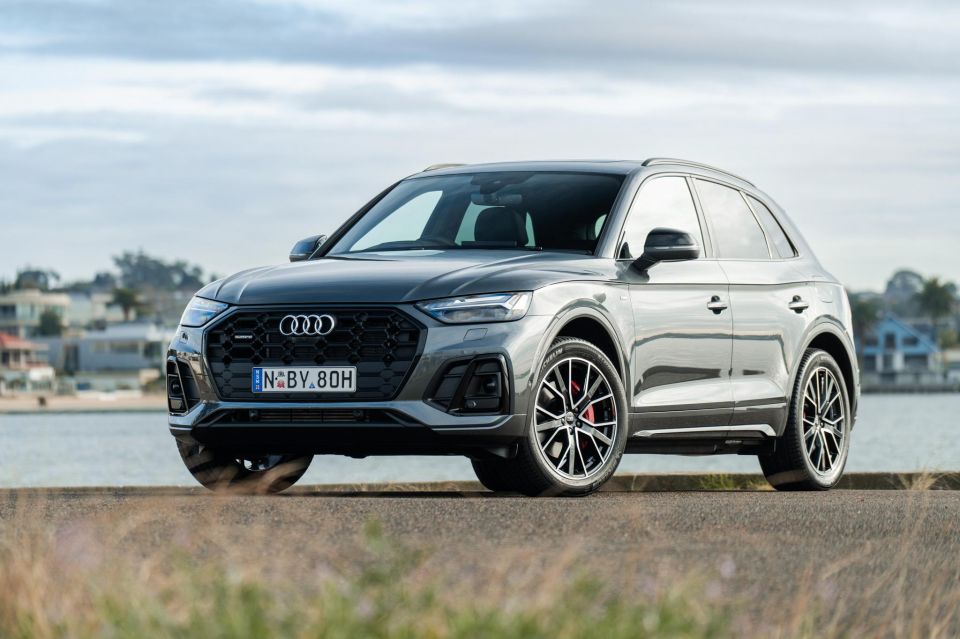

Max Davies
2026 GWM Cannon Ultra review
6 Days Ago

News Editor
Audi says it’ll be able to meet new emissions regulations in the next few years with the arrival of new mild- and plug-in hybrids and electric vehicles.
The New Vehicle Efficiency Standard (NVES) will go into effect on January 1, 2025, with penalties to come into effect on July 1, 2025.
“Is it going to intensify [battery-electric vehicles]? Probably yes, to a certain degree,” Audi Australia director Jeff Mannering told CarExpert.
“It also makes you look a little bit closer at your portfolio, what’s available that you don’t have in all the individual models.”

Under the NVES, car companies have a CO2 target that will get stricter each year. If they meet or beat it, they’ll receive credits.
If they miss it, they can either trade credits with a different supplier, make it up over a set period, or pay a penalty of $100 per gram of CO2 per kilometre over their target.
Audi Australia is introducing its most affordable EV yet this year with the Q4 e-tron, and has also confirmed the A6 e-tron for our market.
The related Q6 e-tron SUV also appears likely, while Audi already offers the Q8 e-tron and e-tron GT EVs.
“It’s not just about electric cars, it’s about do you bring a plug-in hybrid in a car and maybe not have [a solely combustion-powered vehicle,” said Mr Mannering.

“So we’re looking very closely at what’s available for us.”
“One good thing for us is everything is new now. So in the next 18 months, we’ve got all the new models coming. So we’re looking closely at, do we have a PHEV [plug-in hybrid] in more segments than we’ve currently got now?
“Because the calculation to qualify for NVES, the plug-ins are pretty good.”
Audi currently offers just two PHEVs in Australia: the Q5 and Q8. In Europe, it offers a much wider range, including plug-in versions of the A3, A6, A7, A8, Q3, and Q7.
But the company says it’s not in any danger of missing NVES targets anytime soon.

“We’re okay at the moment for the next couple of years, even if we didn’t bring any BEVs, our portfolio is okay,” said Mr Mannering.
“But then from 2027, ‘28, ‘29 when the CO2 levels come down – because I think the calculation on average is about one BEV gives you 20 ICE [combustion-powered] cars, around about depending on which engine it is – so you’ve really got to look at efficient engines.”
Audi says its new ‘mild hybrid plus’ technology, as seen in the recently revealed A5 and S5, makes its combustion-powered vehicles even more efficient.
“So that has even more efficiency. It’s got a bigger battery. It’ll actually do low-speed manoeuvring on full electric,” said product planning manager Peter Strudwicke.
“So it’s kind of the next step in terms of mild hybrid and that contributes to CO2 savings which obviously will feed into NVES.”

When asked whether NVES would force Audi Australia to cull any models, Mr Mannering said:
“Not necessarily. It depends on what the mix of PHEVs and what the mix of BEVs are. So as the new models come out with the full electric, you actually have to calculate if we sell 10 of those, you can sell x amount of those ones.”
“You’ve got to evaluate every new car and with every model year change or whatever technology you have to say, where are we, where we need to get to? And what does that mean for the portfolio?”
While Mr Mannering didn’t say anything was on the chopping block, he hypothesised what the company could do to meet stricter targets.

“It could mean, I’m not saying it would, but you could not bring maybe one engine variant of an ICE car,” he said.
“Maybe you change it to a PHEV. It could mean that if you have the A6 e-tron that’s coming, maybe we have to position the car in the market a little bit differently to get some volume so you can still bring the ICE cars.
“But the ICE cars have got a limited lifetime anyway,” he added, noting Audi’s global goal of going EV-only in 2033 except in China.
With EV sales cooling in markets like Europe, however, companies have had to adjust their rollout of such vehicles, with some even delaying their target to go EV-only.

“[Before 2033] the transition in the middle is maybe a little bit different,” said Mr Mannering.
“I think the transition before NVES was going to be everything’s going to be BEV. Now, it’s a little bit more… not complicated, it just makes you look at what cars you’re bringing.”
Audi’s global CEO Gernot Döllner recently told Top Gearthat if, for example, Europe delayed its plans to ban the sale of new combustion-powered vehicles from 2035, Audi may have to adjust its plan.
“We will have to adapt it… slightly. We are flexible. But you have to stick to your strategy, as a model cycle is seven years.”

Audi is continually expanding its range of EVs, and will soon more or less have an entire shadow lineup of EVs to sell alongside its combustion-powered vehicles.
“In 2027-28 we will have the peak amount of models, almost double those we have now,” he said. Beyond that, ICE models will gradually be pruned.
In the meantime, Audi plans to expand its range of PHEVs.
“All combustion cars will have plug-in hybrid versions. We thought PHEV would be a bridging technology. Now we see the bridge is longer than we thought,” said Mr Döllner.
Where expert car reviews meet expert car buying – CarExpert gives you trusted advice, personalised service and real savings on your next new car.
William Stopford is an automotive journalist based in Brisbane, Australia. William is a Business/Journalism graduate from the Queensland University of Technology who loves to travel, briefly lived in the US, and has a particular interest in the American car industry.


Max Davies
6 Days Ago


Josh Nevett
4 Days Ago


Max Davies
4 Days Ago


Max Davies
3 Days Ago


Neil Briscoe
2 Days Ago


Max Davies
13 Hours Ago